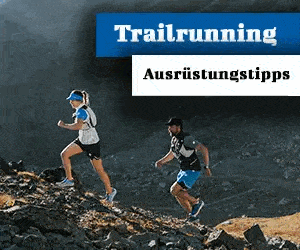On April 16, 2019, Hansjörg Auer, David Lama and Jess Roskelley died on Howse Peak in Canada. John Roskelley, Jess's father, reconstructed the accident in detail using photos and GPS data from their cell phones and cameras.
By John Roskelley / translation by Jochen Hemmleb - First published in the trade journal bergundstieg
On April 16, 2019 at 5:51 in the morning, the three climbers were in cold but clear weather on the ascent over the steep slopes below "M16", a difficult mixed route by Steve House, Barry Blanchard and Scott Backes. The route has only had one inspection.
Hansjörg was walking, David and Jess used touring skis. A little later David and Jess left their skis on a long traverse in the snow to catch up with Hansjörg. All three reached the beginning of the first difficulties shortly before 7:00 a.m., a waterfall with difficulty level WI6 around 340 meters above their camp.



Hansjörg took over the first lead and mastered the pitch in 15 minutes after waiting for a Spindrift avalanche to sweep over him. Another 15 minutes later, all three were on the stand above the pitch. Because he was either looking for a new variant or the conditions of the two routes above him - "M16" and "Howse of Cards" - were no longer good so late in the season, David crossed to the left along a snow band to a difficult one, from the right left inclined ramp.
Jess followed by holding a Petzl Micro traxion used while David at the same time backed up Hansjörg. They climbed about 80 meters up the ramp until at 8:36 am David crossed another horizontal snow band to the left again to look for the upper waterfall pitches of the "King Line". A mixed line that has not yet been started is called “M16” to the left of the route. David led the waterfall (WI6 +), Jess and Hansjörg quickly followed.
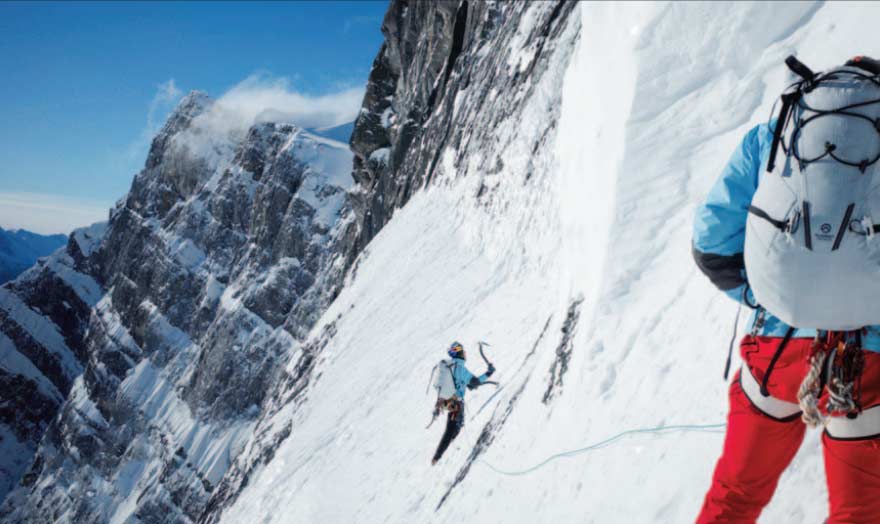
At the exit of the waterfall after the main difficulties, the three untied themselves and stowed the ropes in their rucksacks. 50 minutes later, at 9:42 a.m., Hansjörg took the photo David and Jesshow they approached the end of a long snow channel over the waterfall of the "King Line".
As 450 meters of open and avalanche-prone snow flanks lay above them, as well as short mixed passages, the three of them crossed again to the left at 9:57 a.m. to reach a snow ridge at 2832 meters. This led them to a 30 meter wide snow channel, the right branch of a larger, moderately sloping snow hollow and a channel system above the “Life by the Drop” route.
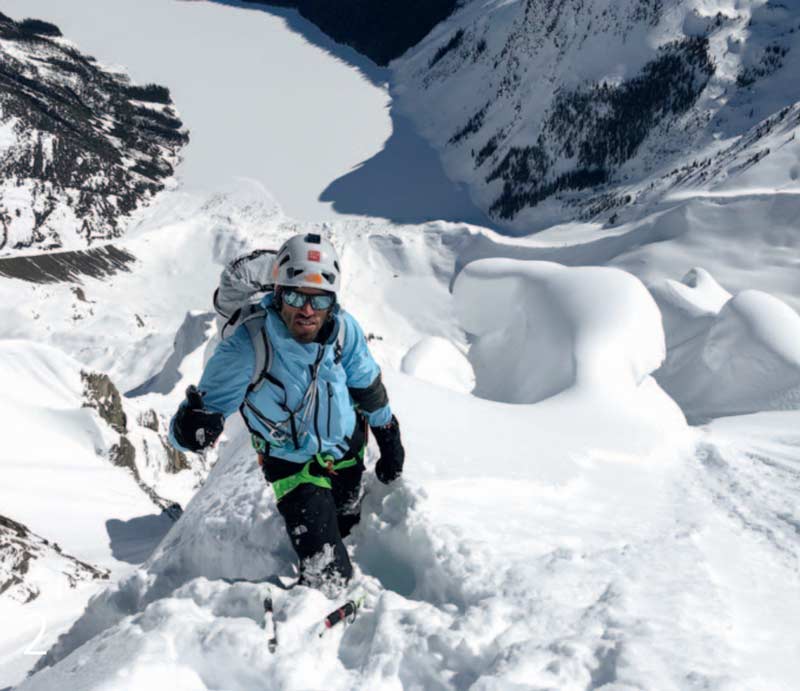
Hansjörg below Jess and David on the traverse to the left into a snow channel. Photo: Jess 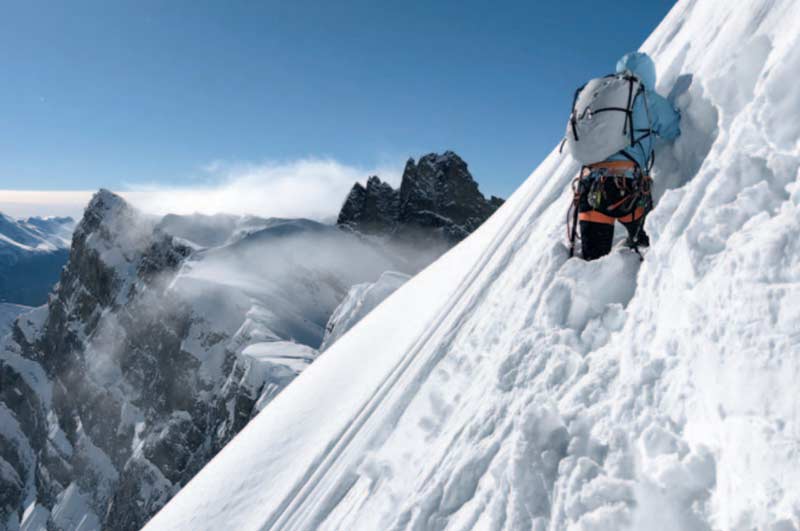
David digs through the snow to get to a gully to the left. Photo: Jess
Jess, standing ankle-deep in the sun-soaked snow, stepped forward in the gully that led to the southwest ridge. At 11:02 am, Jess, who was now secured on a single strand, led a difficult mixed pitch on the ridge. After more than 300 meters of mixed climbing, the three-person rope team reached the 3295 meter high summit.
A little later, Hansjörg took the first photo of the summit. It was 12:41 p.m. The sun was shining, but the first clouds were coming up. Shortly after Jess took his summit photo with all three climbers at 12:44 p.m., they began the descent.
Hansjörg took a few more pictures during the numerous abseiling lengths on the ridge. At 13:27 he took the last picture that was found on one of the three cameras.
The photo shows David at the foot of the last abseil length from the southwest ridge into the snow channel through which they climbed. In the lower right corner of the picture you can see the ridge edge with its traces of ascent.
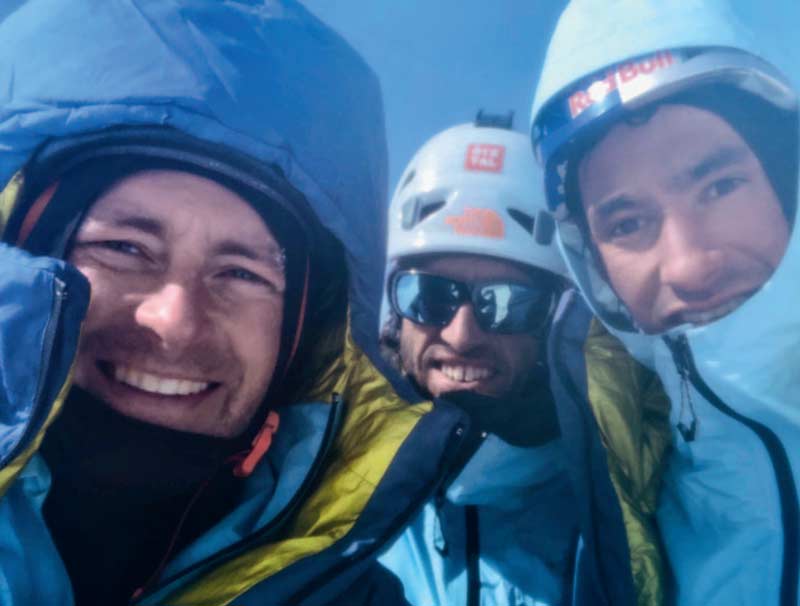
Now the three of them took up the ropes in loops in order to quickly get over the already softened snow flank to the crossing, which leads out of the funnel-shaped hollow above the exit of the route "Life by the Drop". During the ascent they had already walked these moderately steep snow flanks without a rope. From the southwest ridge it was 165 meters in altitude down to the lower end of the snow channel and the traverse over to the further channel above the “King Line”, which would be followed by further abseiling lengths.
When pulling off the two ropes, which were connected with two overlying sack-stitch knots, Jess tied another sack-stitch at the center mark on both strands, so that he received two loops about 50 centimeters long. He slipped his arm through the loops, tossed it over his neck, and shot open the four strands of rope.
He took a loop of the green and blue rope from the rope that was now hanging in front of his chest, tied a normal-size sack stitch into it and hung this loop with a carabiner into the shaft end of one of his ice axes. The knot was about six feet from the central double loop around his shoulders.
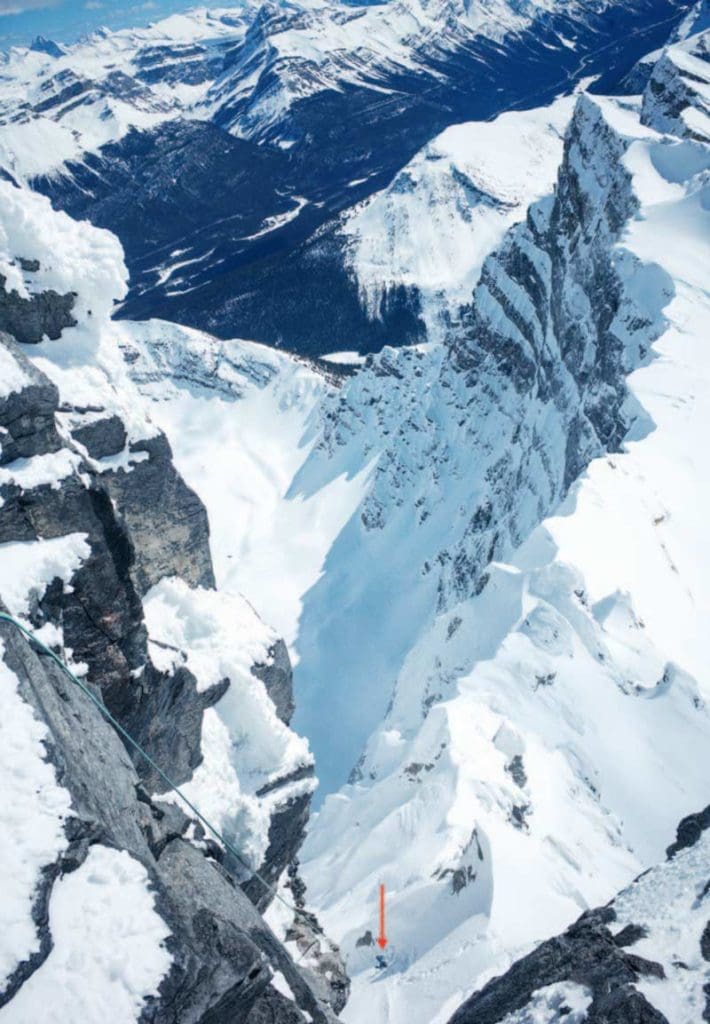
According to a former climbing partner, Jess used this technique to have a movable fixed point when walking unshackled with a rope shot. Hansjörg, David and Jess continued their unsecured descent over the snow flank.
Everything indicates that the three intended to descend on their ascent route.
Everything indicates that the three intended to descend using their ascent route - they knew where possible abseiling points were; David and Jess had left their skis on the route, and after a phone call with me two days before they left, Jess was convinced that the safest alternative would be to descend using the ascent route (Jess's father had the northeast pillar of Howse Peak several years ago committed and knew the various possibilities of relegation; note).
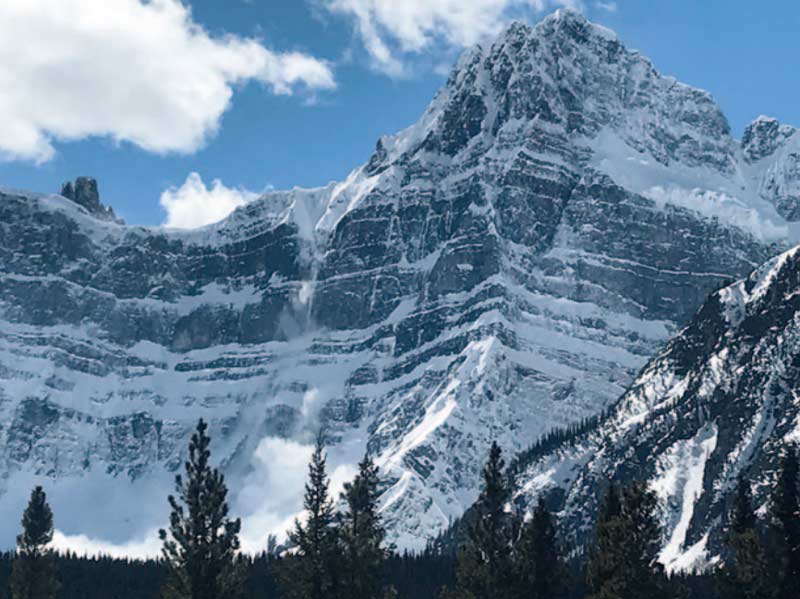
As they descended in the early afternoon sun, a slab of snow came off before they could leave the channel in the direction of the “King Line”. Most likely, they heard the slope crack, turned, and prepared for the inevitable violence that would descend upon them. The broken end of the shaft of one of his ice axes and the bent carabiner attached to it, which I found later, show that Jess was still able to hammer his ice ax into the ice under the snow with noticeable force before the full force of the avalanche hit him.
Most likely, they heard the slope crack, turned, and prepared for the inevitable violence that would descend upon them.
She overwhelmed him and he lost his footing. After six meters of fall, the rope tightened between the ice ax and the loops around Jess's shoulders, and the full force of the avalanche was now acting on the knots, breaking the shaft end of the ice ax. The knots were later pulled together as tightly as if they had been welded.
I have no doubt that both David and Hansjörg hit their ice tools in the ice. But they were probably not connected to their ice tools.
I have no doubt that both David and Hansjörg hit their ice tools in the ice. But they were probably not connected to their ice tools. In fact, neither David nor Hansjörg used hand straps for this climb. I found both of Jess's ice tools, but none of David's and only one of Hansjörg's, which was undamaged. When Jess was recovered, the two ropes were wrapped around his torso and both legs several times.
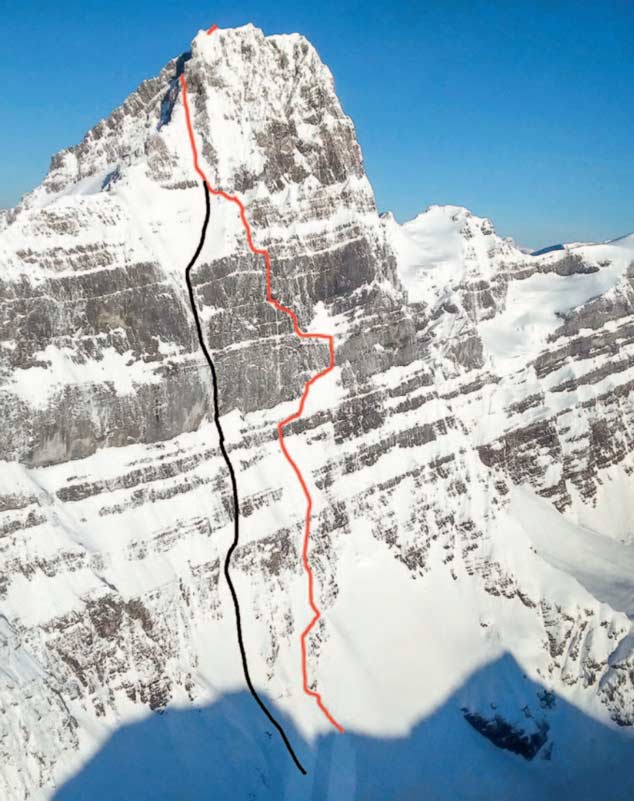
Hansjörg did not seem to have had a rope on his body, while David was wrapped in some loops. All three climbers were washed down into the snow basin and via the “Life by the Drop” route. On the same day, April 16, 2019, just before 14 p.m., Quentin Roberts, an experienced climber from Canmore, parked his car on the Icefield Highway to inspect the routes at Howse Peak. When he and his partner were looking at the east face, an avalanche swept through the hollow above the “Life by the Drop” route and atomized on the glacier at the foot of the wall.
When he and his partner were looking at the east face, an avalanche swept through the hollow above the “Life by the Drop” route and atomized on the glacier at the foot of the wall.
Little did they know that Hansjörg, David and Jess were in the wall at that time. Roberts ran back to his car, got his camera, and took a photo of the huge cloud of snow that was forming at the base of the wall. It was 13:58 p.m. 31 minutes after Hansjörg had photographed David as he removed himself from the ropes after abseiling at the upper end of the snow channel.
After Jess didn't report by the morning of April 17th, I called mountain rescue.
The sky had become cloudy overnight and only the lower half of the east wall was visible. During the second search flight, the helicopter crew found one or two bodies halfway up the avalanche cone under “Life by the Drop”, some of them buried by the snow. Due to the high risk of avalanches and the temporary deterioration in the weather, it was only possible to drop a mountain rescue team on the avalanche cone on April 21st. The bodies had since been buried by other avalanches and could only be located by using an avalanche dog.
Jess, David and Hansjörg were close together. In order to quickly free the bodies from the hard avalanche snow, the mountain rescuers had to cut the ropes that David and Jess were wrapped in.
The corpses were then flown to the base of the wall by longline. Mountain rescuer Grant Statham said he did not have a tear edge during a reconnaissance flight on April 20 Avalanche can make out in the descent channel or the trough below, whereby such an edge could have been covered again by the intermittent snowfalls.
A video in memory of David Lama
Since the bodies were near the surface when they were first seen on the avalanche cone on April 17th, a comparatively small slab of snow seems credible as the cause of the accident (the breaking of a cornice from the ridge above was also discussed; note).
Since the bodies were close to the surface when they were first sighted, a comparatively small slab of snow seems credible as the cause of the accident.
The accident is likely to have occurred in the time window between the climbers' descent into the snow channel after 13:27 p.m. and the avalanche photographed by Quentin Roberts at 13:58 p.m. Hansjörg, David and Jess had climbed the east face of Howse Peak from their camp at the foot of the wall to the summit - an altitude difference of 1340 meters - in less than seven hours.
Knowing what happened to these three young men in the last moments of their lives does not bring them back into our arms. But the story of their last climbing tour may help their families, friends and loved ones to more easily complete it and find peace.
John Roskelley
This is the result of their strength, talent and perseverance. However, her death proves once again that the mountain makes the final decision about success or failure.
The report is based on the photos of the three climbers, the equipment that was found on their bodies and at the scene of the accident, detailed information from mountain rescue worker Grant Statham and three subsequent excursions to the scene of the accident that I undertook myself. Jess was carrying his iPhone when he was recovered. It provided exact time information, altitude data and GPS coordinates for each of his photos. The coordinates were transferred to Google Earth and localized there.
These proved that the three had committed a new variant in the east face of Howse Peak and when they had reached the summit. On my second ascent to the accident site on June 2, 2019, Tim Sanford, a good friend of Jess, and I found David's GoPro and Hansjörg's camera, the pictures of which revealed details of their route. I compared these recordings with those of Jess' iPhone and thus got an exact timeline.
This enabled the mountain rescue men Grant Statham and Steve Holeczi to reconstruct the route of the three climbers pitch by pitch. The equipment found testified to the overwhelming force of nature that killed the climbers. In the beginning, however, they left me with as many questions as they had answers about what had happened after Hansjörg's last photo of David. Since August 4th, more than 30 pieces of their two ropes had been laid out on the floor of an empty room in my house for over two months while I tried to understand the meaning of four knots they tied into those ropes. Less than six months after the accident, I finally found the answers.
John Roskelley, 4.2.2021/XNUMX/XNUMX
John Roskelley, father of the unfortunate Jess Roskelley, is an American mountaineer and author. He looks back on numerous first ascents and has stood on some 7.000 and 8.000 m highs.
About the magazine bergundstieg
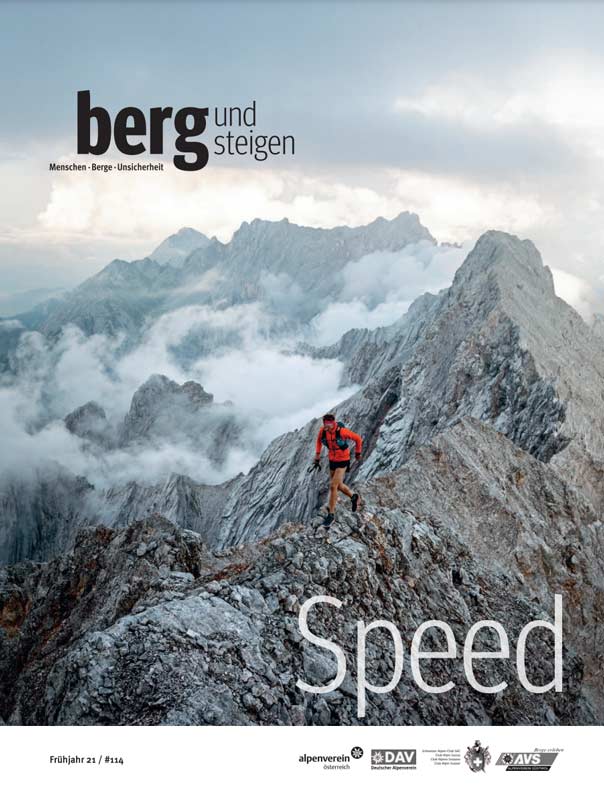
Bergundstieg is an international magazine for safety and risk in mountain sports and illuminates the topics of equipment, mountain rescue, rope technology, accident and avalanche knowledge. Bergundstieg is published by the Alpine Associations of Austria (PES), Germany (DAV), South Tyrol (AVS) and Switzerland (Customer Service).
+ + +
Credits: This article first appeared in the journal mountaineering.


